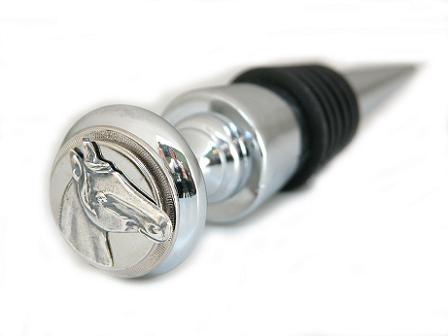~
By Jim Boyce
The Year of the Snake has slithered off, the Year of the Horse has trotted in, and people are wondering what is ahead for the China wine trade. Below is a story I wrote for Wine Business International with interviews of professor Ma Huiqin of China Agricultural University, Alberto Fernandez and Ian Ford of distributors Torres and Summergate respectively, and owner Weiley Lu of Beijing wine shop The Loop, who is also the city’s rep for Shanghai-based importer Tinta Fina. I’ve also included some bonus quotes afterward — I didn’t have enough space for all of them in the story.
~
First published by Wine Business International. Reprinted here with permission.
Predictions for the Chinese market in 2014
Given strong annual import growth that regularly topped 50% during the past decade, the numbers for China in 2013 – volume up 4.8%, value up 0.5% – seem dire, especially with steep drops in the third and fourth quarters. What lies ahead as we trot into the Year of the Horse? Some things to consider:
First, don’t expect those galloping years of high growth to return.
“I think there will be a decrease in the overall volume and value of imported wines, the same with domestic wineries,†says Ma Huiqin, a China Agricultural University professor and wine marketing expert. “For those agents or companies who depend on official spending and gift wines, 2014 will be a hard time.â€
In other words, expect the government’s austerity drive to continue curbing entertainment budgets.
“Companies that rely on government-related business, including state-owned enterprises, as their primary source of income have been hammered — many of them will downsize or will disappear,” says Ian Ford of wine distributor Summergate.
That means greater focus on what Alberto Fernandez of Torres calls “end consumers, family pockets and private corporate businessâ€. He foresees efforts to target younger consumers and shift buyers to wine from other drinks.
In general, consumers will exert more power, says Ma: “They will have more confidence about what they like and what they want to buy.â€
Some companies are already positioned for this, including Beijing wine shop The Loop.
“As our price range is considerably lower, with 80% of our products under rmb500 ($82.00), we have never focused too much on government sales that are heavily reliant on connections,†says owner Weiley Lu, who has already seen more private customers trying new wines.
Consumers should also see lower prices from a wine surplus due to the rapid growth of importers over the past five years. Ford calls stock sell-offs “rampant†and says “we can see a premium imported brand traded on e-commerce outlets at less than half the normal retail priceâ€.
As for online sales, these should continue to grow in importance, though perhaps not profitability, says Ma, who cites sustained fierce competition. She also expects traditional wine distributors to increasingly focus on online.
But Fernandez stresses the need to look past standard online platforms and to newer ones, including the popular social media application WeChat. “Purchasing habits are moving fast and we need to monitor them before we become phased out in our marketing approach,†he adds.
For his part, Lu says online shops are costly to create and maintain and do not necessarily help consumers. He favors mailing lists since they facilitate more intimate communication. For the same reason, he sees wine shops growing in importance. Websites are not substitutes, “just as robots cannot not replace well-trained waiters and sommeliers.â€
In the end, it all seems to point to a year that will feature an increasingly sophisticated market with smaller volume, less value and fewer distributors. That might not be so bad.
“Overall I see this as a good trend and signaling the beginning of a more mature market,†says Fernandez.
Note: Click here to go to the story on the Wine Business International site and here to sign up for the WBI newsletter.
~
Bonus Quotes
Ford on the austerity program:
“The austerity program has been a seismic event in the China beverage alcohol industry. Despite reports across international and domestic media, and reporting from publicly traded companies, the impact on all levels of the trade across China is still underestimated.”
Ma on consumer attitudes:
“Wine will become more of a regular commodity and less of an “icon” drink. There is more transparency with wine prices and users’ remarks will be more important as a reference on purchasing decision.
Lu on his shop’s customers:
“I see Beijing consumers starting to believe that not all expensive wines are good. I’ve been educating mostly entry-level drinkers regardless of their budget, to start with something simple but typical, and go through a set of wines before they explore their favorite palate. In terms of wine drinking trends, I see far fewer requests for Bordeaux, and more consumers eager to try Burgundy and Italian and Spanish wines.”
Fernandez on prospects for Grace Vineyard and Silver Heights, two Chinese labels in Torres’ portfolio:
“Both are very healthy because they are extremely consistent with their respective values and goals: quality and passion for making the best Chinese wine possible in their own regions. I am very happy to see that more and more good brands are coming up in the market and from many other regions. That can only help to change the perception for the Chinese wine category. But that will require time.
~
Get the free Grape Wall newsletter. Sample here. Subscribe here. Follow on Weibo here.
Grape Wall has no sponsors of advertisers: if you find the content and projects like World Marselan Day worthwhile, please help cover the costs via PayPal, WeChat or Alipay.
Sign up for the free Grape Wall newsletter here. Follow Grape Wall on LinkedIn, Instagram, Facebook and Twitter. And contact Grape Wall via grapewallofchina (at) gmail.com.


Leave a Reply
You must be logged in to post a comment.